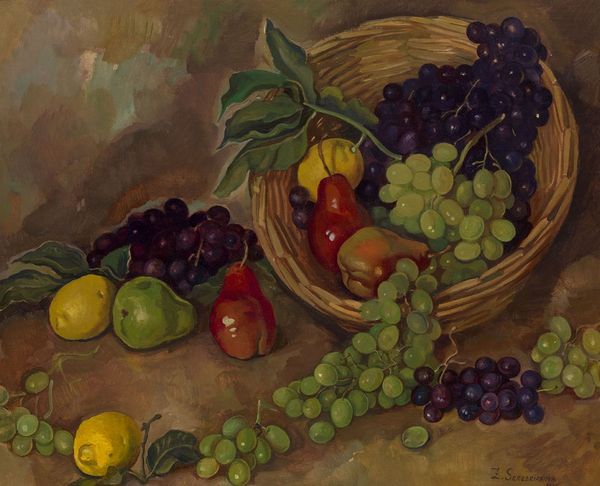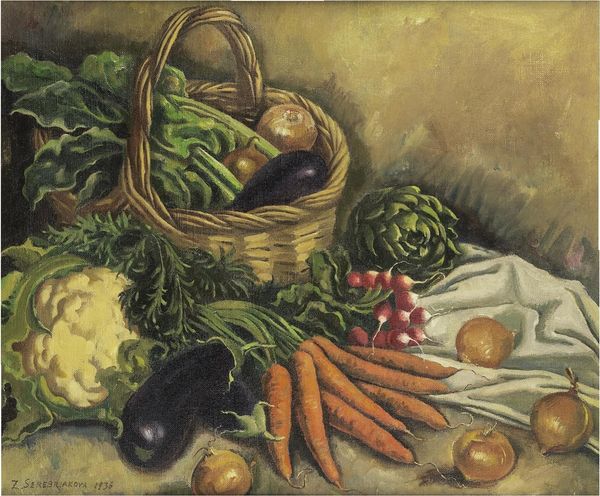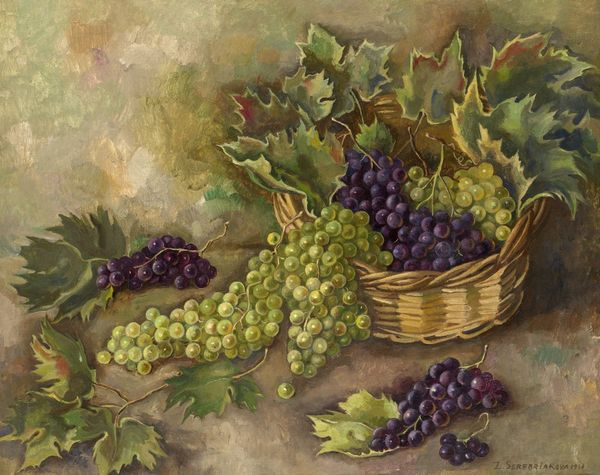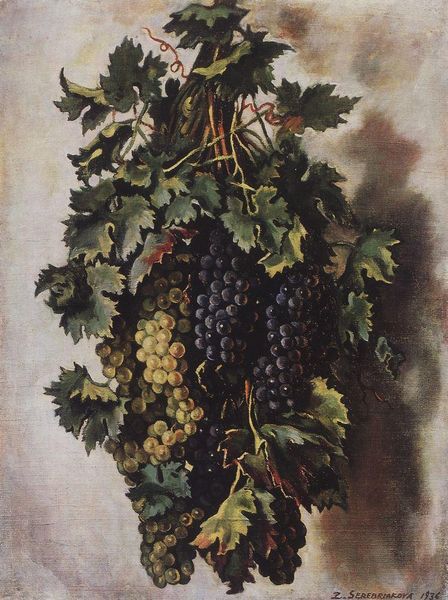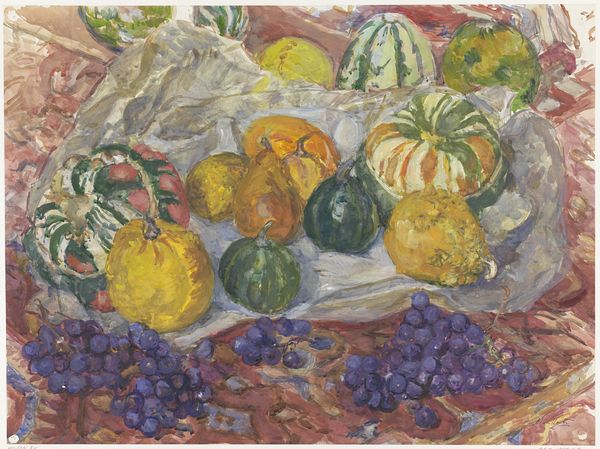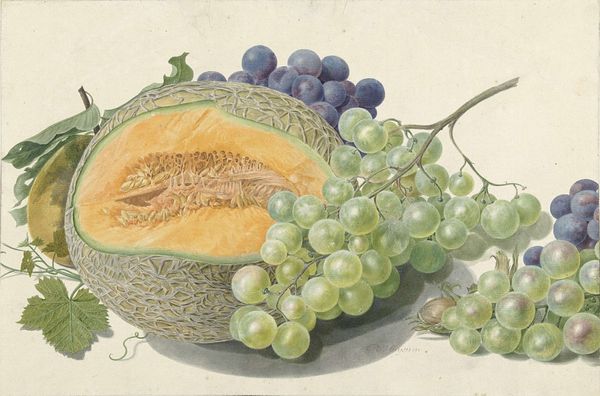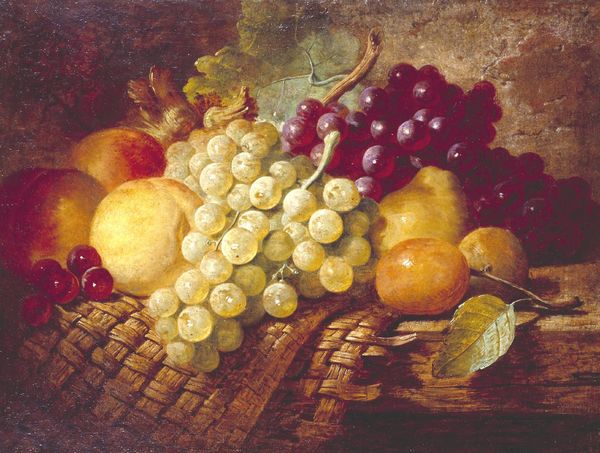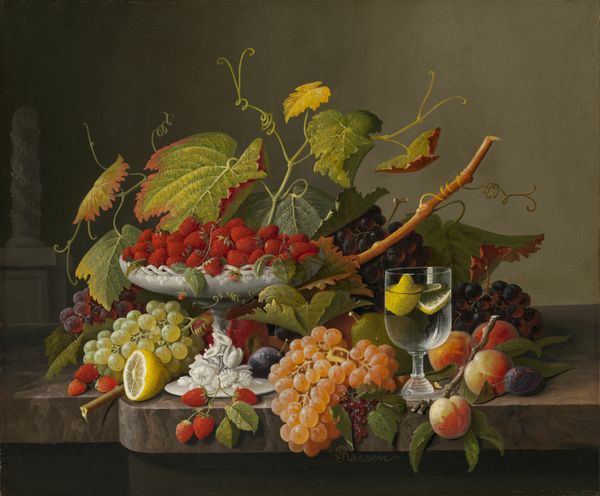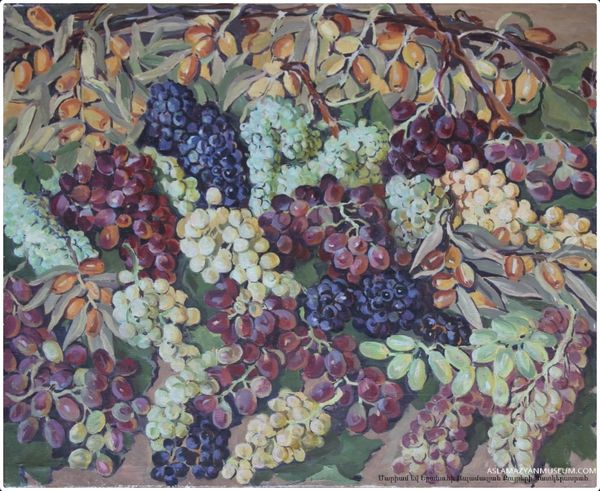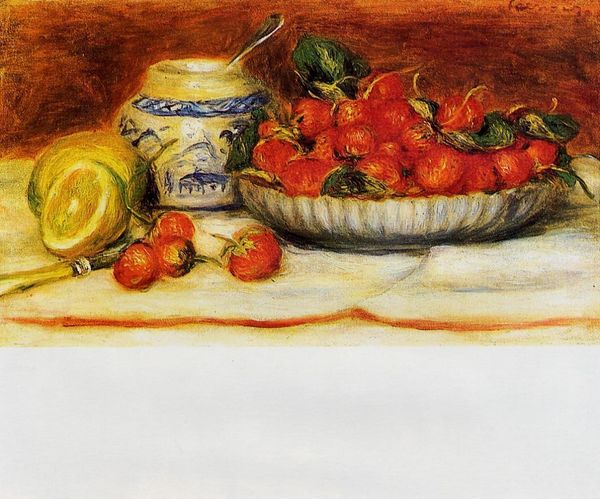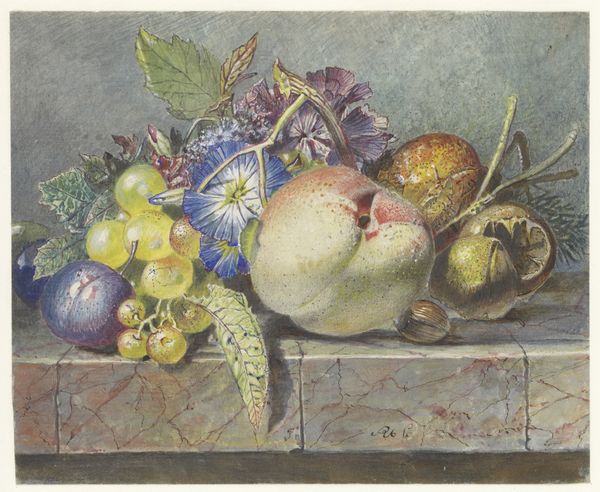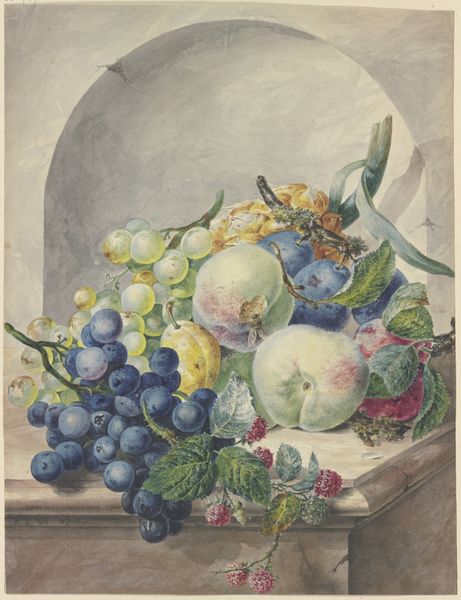
Copyright: Zinaida Serebriakova,Fair Use
Curator: Here we have Zinaida Serebriakova’s “Basket with grapes and peaches,” created in 1931. Editor: The first thing that strikes me is how tangible it all seems. You can almost feel the wicker of the basket, and the soft fuzz of the peaches. Curator: Yes, still life as a genre often carries symbolic weight, and this piece is no exception. Consider the classical allusions inherent in fruit imagery. Editor: What’s really compelling to me is the interplay between what we consider “fine art” – oil painting, certainly – and the everyday object, the humble basket. Look closely, you can see the individual brushstrokes that form the wicker. Someone put immense skill and time into representing this container, probably produced by anonymous hands. Curator: It’s fascinating to consider how Serebriakova infuses traditional still life with a touch of modernism, a nod to the Russian avant-garde of which she was once a part. Notice how the textures and hues create a vibrant tapestry – a feast for the eyes, evoking abundance. Editor: I agree, and the way she's rendered those grapes, different colors of green, the purples, reds! It reminds us of where our food actually comes from, a point often missed amidst abstract aesthetics or idealized paintings. Curator: Thinking about the context – 1931. What a period of upheaval, the making of an unstable world order… It's easy to see how artists retreat to seemingly banal scenes of simple comfort and eternal abundance, almost like prayers and a way of countering historical pessimism. Editor: Right. Also, thinking about where the raw materials come from, the labor in getting those specific pigments in front of Serebriakova. The layers are fascinating. There's almost a muted, earthly quality even amidst the vibrant colors. Curator: Reflecting upon "Basket with Grapes and Peaches," it serves as more than mere depiction – an embodiment of resilience, timelessness and hidden meanings. Editor: For me, Serebriakova urges us to appreciate not only the product, the painting but also to remember the complex processes of artistic production and making meaning within a certain history.
Comments
No comments
Be the first to comment and join the conversation on the ultimate creative platform.
